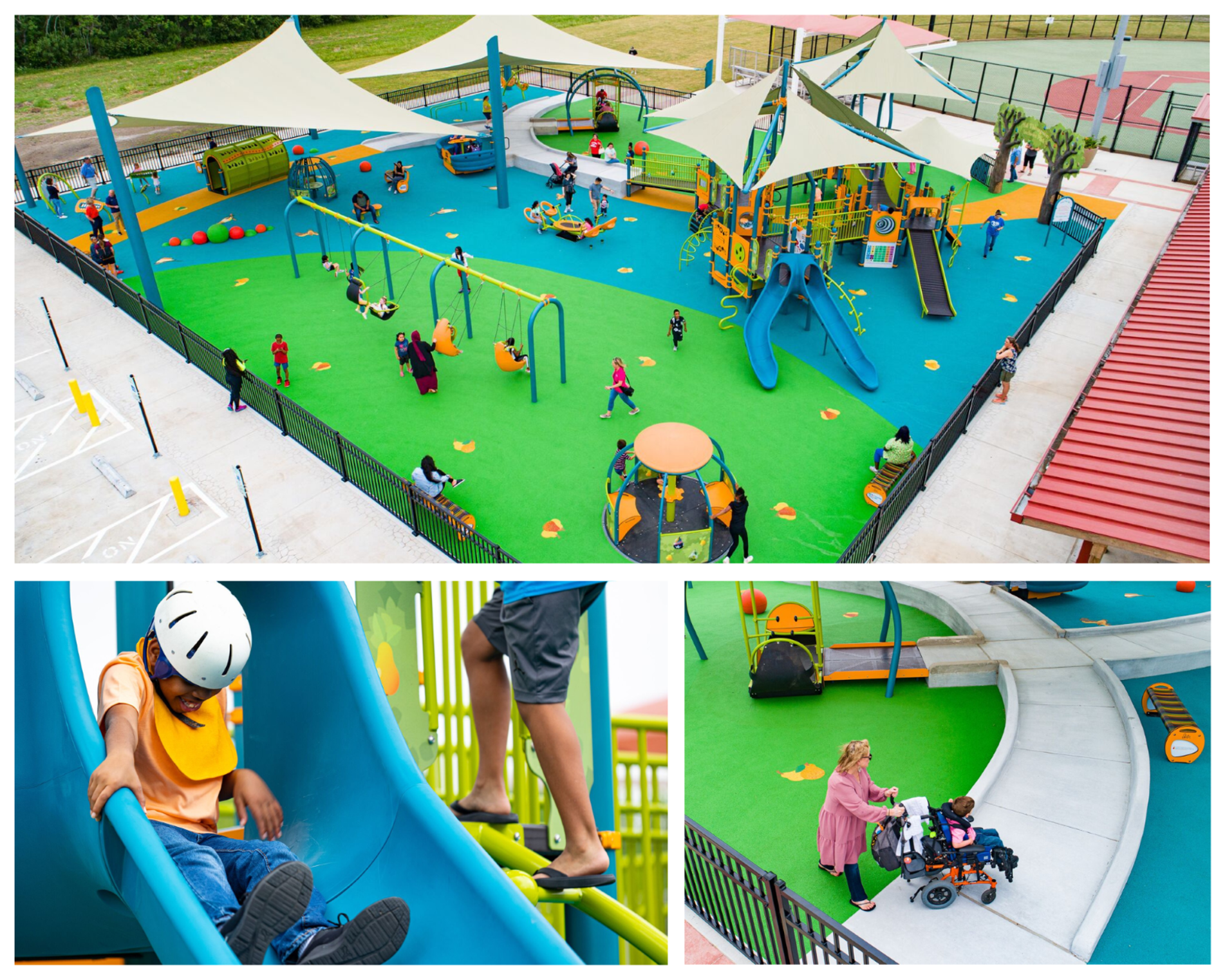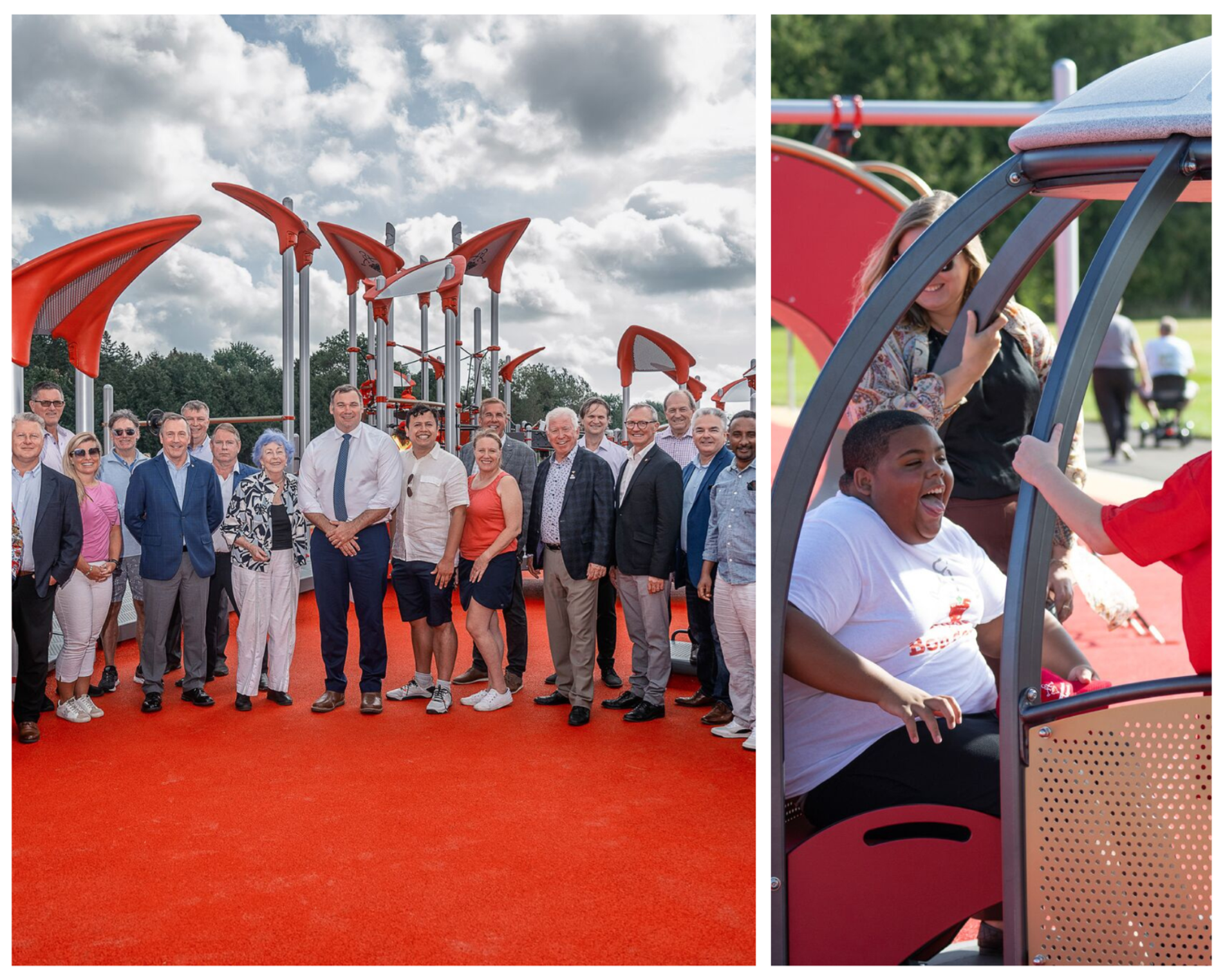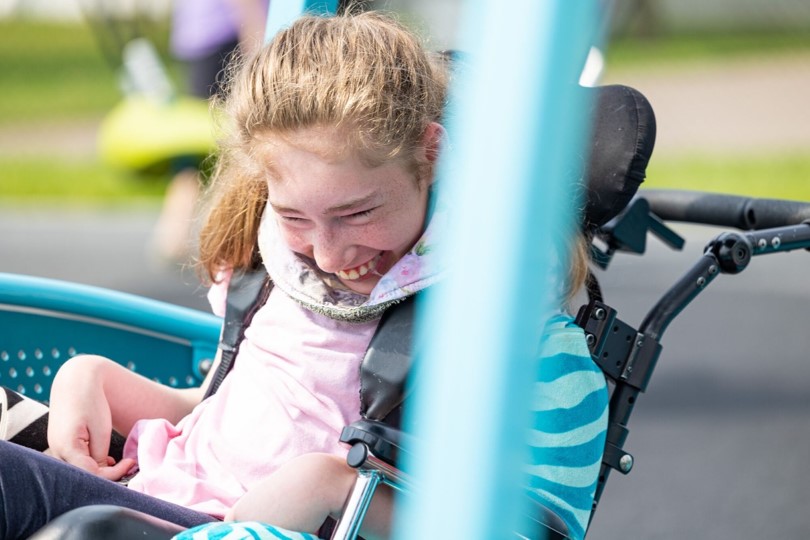Creating True Inclusiveness: Building an Inclusive Playground for Your Community
Introduction
Every child deserves the crucial childhood experience of playing on a playground, but “traditional playgrounds” often overlook the 7.3 million children in the United States who develop differently than the average child. Inclusive playgrounds offer these children the opportunity to enjoy the benefits that playing on a playground can provide. Playgrounds designed with inclusiveness in mind not only benefit every member of the community but also provide children, regardless of cognitive or physical abilities, an equal opportunity to authentically connect with other children and explore the skill developmental crucial to adult life success.
Every playground must comply with guidelines set forth by the Americans with Disabilities Act of 1990 (ADA), which includes providing accessible paths to the equipment, using surfacing compliant with ASTM 1951, providing ramps, and adhering to many other guidelines. However, these guidelines primarily address individuals with physical impairments and those requiring mobility devices, inadvertently disregarding those with non-visible disabilities such as autism, sensory and processing difficulties, cognitive impairments. Inclusive playgrounds, on the other hand, not only follow ADA guidelines but also consider children with non-visible disabilities, going above and beyond to ensure everyone feels comfortable and welcome in the play space.
From planning to fundraising, there are many steps that come before the finished inclusive playground product. In this blog, we will discuss some of the essential elements necessary to create a successful inclusive playground, while emphasizing the importance of inclusiveness throughout the process.

Planning and Designing for Inclusiveness in Mind
In our “Defining Inclusiveness in Playground Design” blog, we discuss how the Whirlix Design team, comprised of designers and inclusive play experts, adheres to the seven principles of universal design established by Ronald Mace's group at North Carolina State University. These principles encompass equitable use, flexibility, simplicity, perceptibility, error tolerance, low physical effort, and adequate space for approach and use. Throughout the design phase, these principles are paramount, ensuring that inclusiveness remains central to our process. This approach enables us to bolster accessibility, safety, comfort, and social engagement across all our play spaces.
When planning an inclusive playground, it is vital to consider the needs of your community and provide opportunities for community members to express their desires for the new gathering space. An inclusive playground serves as a hub for communities to unite, making community involvement in the design process essential for its success. Thus, during the design phase, it is imperative to collaborate closely with your representative and design team to transform your inclusive playground vision into reality, thereby embodying the essence of inclusiveness.

Building Funding and Resources Through Community Collaboration
As discussed in our blog, “A Guide to Securing Inclusive Playground Funding and Resources,” inclusive playgrounds are a significant financial investment for your community, necessitating crucial fundraising and resource gathering to establish this gift for communities. There are numerous ways to acquire the necessary funds and resources for your community's dream inclusive playground. Sparking a true invitation for inclusion and inclusiveness throughout the community and its spaces.
Many organizations recognize the positive impact playgrounds have on communities and often find a philanthropic value in allocating funds to support construction through grants. When applying and exploring grant opportunities, consider the organizations that share values like your playground’s goal. This approach increases the likelihood of finding grants that align perfectly with your playground project.
Involving your community is a great way to raise funds and gather resources. Community fundraising events such as hosting a bake sale, bingo night, car washes, or a silent live auction allow the community to come together for a common goal. Once the playground is installed, the entire community can enjoy the space, knowing they played an important role in bringing the playground to life. You can also leverage local businesses and volunteers for resources. Certain businesses in your community may support your inclusive playground project by offering materials, labor, and other equipment and supplies, reducing reliance on financial donations.
Collaboration with local organizations is essential for fundraising for a large project. Organizations like Kiwanis International and KABOOM! are dedicated to positively impacting the lives of children. Kiwanis International, a global organization of volunteers, shares the goal of bringing play and playgrounds to communities worldwide in partnership with Landscape Structures. KABOOM! mobilizes communities to finance, plan, and construct playgrounds throughout the nation. These organizations are examples of local organizations you can engage with to promote inclusiveness in your community.
Success Stories from our Inclusive Playground Projects
In our blog, "Whirlix Design Success Stories: Transforming Communities Through Inclusive Playgrounds," we showcase the successes of our inclusive playgrounds, revealing common features that transcend all of our projects. These features are what make the inclusive playgrounds fully accessible and enjoyable for all. Inclusive playgrounds not only adhere to the guidelines set by ADA but also make accommodations for those with non-visible disabilities, thus embodying the essence of inclusiveness.
In terms of creating accommodations for those with physical impairments, several components need consideration. For example, unitary surfacing materials, such as poured-in-place rubber and turf, strategically placing ramps, incorporating wheelchair-accessible equipment, ensuring seamless transitions from ground to equipment, designing thoughtful transfer points, and providing molded bucket seat swings that ensure stability for those with limited upper body strength are all crucial elements that benefit individuals with physical impairments. Here are two examples of parks with inclusivity accommodations:
Breckinridge Park in Richardson, Texas
For those with non-visible disabilities, the presence of sensory-rich environments is paramount. For example, outdoor musical instruments, tactile and interactive panels, spinners, ground-level play equipment, and freestanding enclosed spaces for children who need to retreat from overstimulation contribute to the creation of the necessary sensory-rich environment. See pictures of the playscape on our SmugMug.
Ernie Roberts Park in DeSoto, Texas
Within our portfolio of successful inclusive designs, there are incorporations of mobility device accessible equipment and pathways, alongside the provision of sensory-rich pieces for those with sensory needs. It is essential to offer both a mobility accessible environment and a sensory-rich environment to ensure that the space is accommodating to every individual who may visit, thereby fostering inclusiveness within the community. See pictures of the playscape on our SmugMug.
Conclusion
In conclusion, the journey of creating an inclusive playground is not merely about constructing a physical space but about fostering a sense of belonging and unity within the community. By prioritizing inclusiveness from the planning and design phase to fundraising and implementation, communities can create playgrounds that cater to the diverse needs of all children.
Through adherence to universal design principles and close collaboration with community members, designers can ensure that every aspect of the playground reflects inclusivity. Moreover, by leveraging various fundraising avenues and engaging with local organizations dedicated to community enrichment, the financial burden of creating an inclusive playground can be shared amongst stakeholders, further emphasizing the communal effort involved.
Success stories from inclusive playground projects illustrate how thoughtful design elements accommodate physical and non-visible disabilities alike, providing safe and stimulating environments for all children to play and thrive. From mobility device accessibility to sensory-rich features, these playgrounds offer a holistic experience that celebrates the uniqueness of every individual.
Ultimately, inclusive playgrounds symbolize more than just a place for recreation; they represent a commitment to embracing diversity and promoting equity within our communities. By recognizing and accommodating the needs of all children, regardless of ability, we can create spaces where every child feels valued, accepted, and empowered to explore the world around them. In doing so, we not only build playgrounds but also cultivate a culture of true inclusiveness that enriches the lives of all community members.

